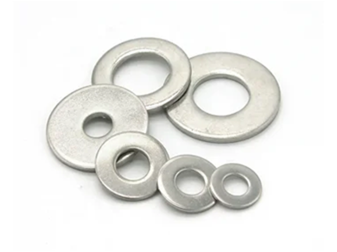dec . 03, 2024 16:55 Back to list
Choosing the Best Screws for Cladding Installation and Maintenance
Understanding Cladding Screws Essential Components for Modern Construction
Cladding screws play a critical role in modern construction, especially in the installation of cladding systems. These screws are specifically designed to secure exterior cladding materials to a building’s frame, providing both structural stability and aesthetic appeal. Given their importance, it is essential to understand their function, types, and best practices for their use.
What Are Cladding Screws?
Cladding screws are specialized fasteners used to attach various types of cladding materials, such as metal, wood, or composite panels, to the underlying structure of a building. They are designed to withstand the elements, providing long-lasting performance in outdoor environments. Typically made from corrosion-resistant materials like stainless steel or coated metals, cladding screws ensure that the integrity of the cladding system is maintained over time.
Types of Cladding Screws
There are several types of cladding screws, each designed for specific applications
1. Self-Drilling Screws These screws are equipped with a drill point that allows them to penetrate the cladding and the substrate without the need for a pre-drilled pilot hole. This feature significantly reduces installation time and labor costs.
2. Wood Screws These screws are used when cladding is installed over wooden substrates. They often feature a coarse thread that provides better grip in wood materials.
4. Composite Decking Screws Designed for use with composite materials, these screws help prevent splitting and are often coated to enhance durability and resistance to weather.
5. Specialty Screws Some applications may require screws with unique coatings or designs, such as those that mitigate galvanic corrosion in metal cladding systems.
cladding screws

Importance of Cladding Screws
The selection of the right cladding screw is vital for ensuring the longevity and durability of a building's exterior. Properly installed screws help prevent issues such as water intrusion, air leaks, and other forms of damage that can arise from poorly secured cladding. Additionally, the right screws enhance the aesthetic appeal of a building by ensuring that cladding panels remain flush and evenly spaced.
Moreover, cladding screws contribute to the building's energy efficiency. A well-fitted cladding system ensures better insulation and prevents drafts, which can lead to higher energy bills and uncomfortable living conditions.
Best Practices for Using Cladding Screws
To ensure the best performance of cladding screws, consider the following best practices
1. Choose the Right Material Always select screws made from corrosion-resistant materials suitable for your specific environment. For coastal areas, stainless steel is often the best choice due to its superior resistance to saltwater corrosion.
2. Follow Manufacturer Guidelines When installing cladding, it's crucial to follow the manufacturer’s specifications regarding screw length, spacing, and installation techniques. This guarantees optimal performance and warranty protection.
3. Use Adequate Fastening Techniques Ensure that screws are not over-tightened, as this can lead to material deformation and compromise the cladding. Conversely, if screws are too loose, they can allow movement and potential water ingress.
4. Regular Maintenance Periodically check and maintain the cladding system, including the screws. Look for signs of corrosion, loosening, or other issues and address them promptly to prolong the lifespan of the cladding.
Conclusion
In conclusion, cladding screws are indispensable elements in the construction and maintenance of contemporary buildings. Understanding their types, applications, and best practices will not only enhance the durability and aesthetic quality of cladding systems but also contribute to the overall energy efficiency of a structure. As the importance of sustainable and resilient building practices continues to grow, proper attention to the details of cladding installation, including the selection and use of screws, will become increasingly vital in the construction industry.
-
The Ubiquitous Reach of DIN934 in Application Realms
NewsMay.16,2025
-
Exploring Different Bolt Types
NewsMay.16,2025
-
Cracking the Code of Sleeve Anchor Mastery
NewsMay.16,2025
-
Clamp Design Principles,Types and Innovations
NewsMay.16,2025
-
Artistry Inspired by the Humble Anchor Bolt
NewsMay.16,2025
-
A Deep Dive into Screw Types
NewsMay.16,2025


